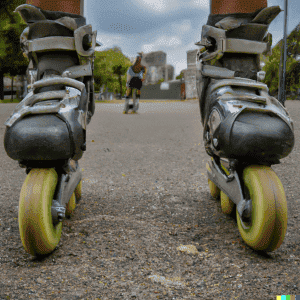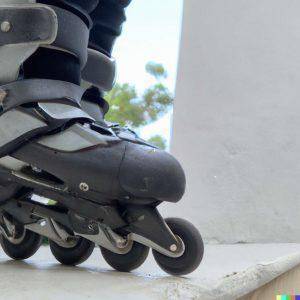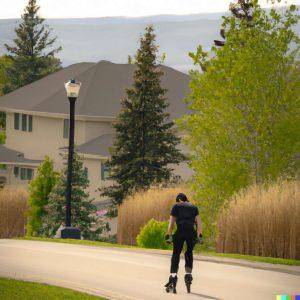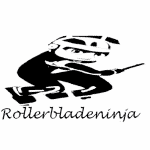Table of Contents
Inline skating is a great way to get some exercise, but it can also be dangerous if you don’t take the necessary precautions. Here are seven tips for how to get started with inline skating and staying safe.
Key Takeaways
- Understanding Inline Skating: Inline skating involves skates with wheels arranged in a straight line, offering both recreational and competitive opportunities. It’s suitable for all ages and skill levels, providing a fun and challenging experience.
- Essential Accessories: Safety should be your top priority. Essential gear includes a helmet, knee and elbow pads, and wrist guards. Quality inline skates that fit well are also crucial for a comfortable skating experience.
- Properly Putting On Inline Skates: Ensure your skates are loosened before putting them on. Tighten the laces from toe to top for a secure, comfortable fit. The “ladder method” can help achieve even lacing.
- Standing Up on Skates: Use a sturdy object for support as you stand up. Practice shifting weight between feet to find balance and gain confidence before moving away from support.
- Staying Safe: Wear protective gear, choose smooth, obstacle-free areas for practice, and start at a comfortable pace. Learn how to fall safely, aiming for the knees or side to reduce injury risk.
- Final Tips for Beginners: Embrace the learning process, consider skating with a friend for motivation, listen to your body to avoid overexertion, and gradually introduce new techniques as your confidence grows.
- Stopping Techniques: Mastering stopping techniques, like the T-stop or exploring other methods, is essential for safety and control. Experiment with different techniques to find what works best for you.
BODYPROX Knee Pads Elbow Pads Wrist Guards Set for Inline Skating, Skateboarding, Roller Derby, BMX Ride, and Rollerblading.
(as of 07/25/2024 14:17 GMT +01:00 - More infoProduct prices and availability are accurate as of the date/time indicated and are subject to change. Any price and availability information displayed on [relevant Amazon Site(s), as applicable] at the time of purchase will apply to the purchase of this product.)What is inline skating?

Have you ever tried inline skating? It’s a form of skating where you strap on a pair of skates with wheels arranged in a straight line.
Unlike traditional roller skates with two sets of two wheels, inline skates have three or four wheels in a row. It’s a popular activity that can be enjoyed both recreationally and competitively.
You can lace up your skates and hit the pavement for a leisurely glide, or take it to the next level by participating in races or attempting daring stunts. Whether you’re looking for a fun way to enjoy the outdoors or an adrenaline-pumping challenge, inline skating has got you covered!

Accessories for inline skating
When it comes to inline skating, there are a few must-have accessories that you shouldn’t hit the pavement without.
Safety first, my friend! The number one item on your list should be a trusty helmet. You never know when a tumble might happen, so it’s crucial to protect that precious head of yours.
Next up, we have knee and elbow pads. These bad boys are here to cushion your joints from any unexpected impacts. Trust me, you’ll thank me later when you’re cruising along and encountering a rough patch.
Oh, and let’s not forget about wrist guards! They’re like bodyguards for your wrists, ensuring they stay safe and sound if you take a spill.
And last but certainly not least, you need a quality pair of inline skates that fit like a glove and feel oh-so-comfy. After all, happy feet make for happy skating adventures. So, gear up with these essentials, and you’ll be ready to roll in no time!
Kuxuan Skates Adjustable Inline Skates for Kids and Youth with Full Light Up Wheels Camo Outdoor Fun Illuminating Skates for Girls and Boys Beginner
(as of 07/25/2024 14:17 GMT +01:00 - More infoProduct prices and availability are accurate as of the date/time indicated and are subject to change. Any price and availability information displayed on [relevant Amazon Site(s), as applicable] at the time of purchase will apply to the purchase of this product.)How to put on your inline skates
Alright, let’s tackle the art of putting on those inline skates! Trust me, I’ve had my fair share of fumbling around when I first started. Here are a few handy tips to make the process a whole lot smoother.
First things first, loosen up those laces! You want to give your foot some room to breathe. Loosen all the laces on your skate before slipping it onto your foot. You’re aiming for a snug fit, not a vice grip.
Once you’ve got your loosened skate in hand, step into it. If you need some extra support, grab onto something sturdy to maintain your balance. No shame in that game!
Now, it’s time to tighten those laces. Start from the toe area and work your way up, gradually tightening each section. You want the skate to feel secure but not strangle your foot. Remember, comfort is key!
The ladder method! Personally, I’m a big fan. It’s a neat trick to ensure your laces are even and tied securely.
Here’s how it goes: thread the lace up through the eyelet and out the top, then loop it around the bottom and back up through the eyelet. Keep repeating this process as you make your way up the shoe. Once you reach the top, tie a bow to lock those laces in place. Voila!
The advantage of using this technique, is that there is a special tool to help pull each run tight making the boot secure.
JeeFree Adjustable Color Gradient Skateboard Helmet for 3-5-8-14+Ages【Toddler Kids Youth Adult】 Girls Boys Woman.Bike Helmet for Multi-Sports Cycling Bicycle Scooter Inline Roller Skate Rollerblading
(as of 07/25/2024 14:17 GMT +01:00 - More infoProduct prices and availability are accurate as of the date/time indicated and are subject to change. Any price and availability information displayed on [relevant Amazon Site(s), as applicable] at the time of purchase will apply to the purchase of this product.)How to stand up on inline skates

Alright, now that you’ve got those snazzy inline skates on, it’s time to rise and shine! Here’s a step-by-step guide to help you find your balance and get on your feet like a champ.
To begin, find something sturdy to hold onto for a little extra stability. It could be a trusty railing, a helpful wall, or any solid surface that’s got your back.
Now, slowly lift one foot off the ground, followed by the other. Take it nice and easy, my friend. Rome wasn’t built in a day, and neither were your skating skills.
Congratulations! You’re now standing tall on your skates. Time to show off some fancy footwork by shifting your weight from one foot to the other. Feel the rhythm and find that sweet spot of balance.
If you’re feeling a tad unsteady, don’t worry! It’s completely normal. Just keep holding onto that support until you start to get the hang of things. Rome wasn’t built in a day, and neither were your skating skills. Practice makes progress!
So, take it step by step, hold on if you need to, and gradually build up your confidence. Before you know it, you’ll be gliding across the pavement like a true skating superstar. Get ready to embrace the thrill and freedom of inline skating, my friend!
WayEee Kids Bike Helmet Set Skateboard Knee Pads, Helmet Pad Set Protective Gear Set Adjustable for Girls Kids 3-10 Helmet Elbow Pads Wrist Guards for Sport Cycling Bike Roller Skating Scooter
(as of 07/25/2024 14:17 GMT +01:00 - More infoProduct prices and availability are accurate as of the date/time indicated and are subject to change. Any price and availability information displayed on [relevant Amazon Site(s), as applicable] at the time of purchase will apply to the purchase of this product.)How to stay safe while inline skating

Safety first, my friend! When it comes to inline skating, it’s crucial to gear up with the proper safety equipment.
Don’t leave home without your trusty helmet, knee pads, and elbow pads.
Now, let’s talk about location. When you’re starting out, choose an area that’s free of obstacles. We want to keep it smooth and obstacle-free, like gliding on a cloud.
Skate parks may be tempting, but for now, let’s save those for later when you’ve got a bit more experience under your wheels.
Remember, slow and steady wins the race. Start off at a comfortable pace, getting a feel for the motion and balance of inline skating. There’s no need to rush into fancy moves just yet. Master the basics, and the rest will come in due time.
Ah, the dreaded fall. It happens to the best of us, my friend. But fear not! If you do take a tumble, try your best to fall on your knees (if you’re wearing those knee pads) or on your side.
It’s all about protecting that precious noggin of yours. Safety gear is our armour, and falling with caution can minimize the chances of any serious bumps or bruises.
So, suit up, choose the right skating spot, take it slow, and if a fall does happen, aim for the knees or side.
With these safety tips in your back pocket, you’re well on your way to enjoying the exhilarating world of inline skating while keeping your body and mind safe.
PAPAISON Adjustable Inline Skates for Kids and Adults with Full Light Up Wheels, Outdoor Roller Skates for Girls and Boys, Men and Women
(as of 07/25/2024 14:17 GMT +01:00 - More infoProduct prices and availability are accurate as of the date/time indicated and are subject to change. Any price and availability information displayed on [relevant Amazon Site(s), as applicable] at the time of purchase will apply to the purchase of this product.)Final tips for inline skating beginners
Inline skating is all about having a blast, so don’t be afraid to let loose and enjoy the ride. Embrace the possibility of falling because, let’s face it, it happens to the best of us. Just pick yourself up, dust off those knee pads, and keep going.
The best way to learn is through experience, and before you know it, you’ll be zipping around like a pro.
If you want some extra motivation and company on your skating journey, why not rope in a friend or family member?
Having a skating buddy by your side can make the learning process even more enjoyable. You can practice together, cheer each other on, and share those little victories along the way. It’s always more fun to share the joy of inline skating with someone special.
Listen to your body, my friend. If you start to feel fatigued, it’s time for a breather. Remember, inline skating is all about having fun, not pushing yourself to the limits.
Take breaks, hydrate, and recharge those energy levels. The joy of skating awaits you, so pace yourself and savour the experience.
Once you’ve nailed the basics and built up your confidence, you might be itching to take your skills to the next level. That’s where advanced moves come into play.
But hold your horses, my eager skater! Take it one step at a time, gradually introducing new tricks and techniques. Rome wasn’t built in a day, and your advanced skating repertoire won’t be either.
Patience and practice are the keys to unlocking a world of impressive moves.
So, my friend, have a blast, don’t fear the fall, and remember to take breaks when needed. Inline skating is your ticket to exhilarating exercise and endless enjoyment.
Embrace the learning process, gather a skating companion, and when you’re ready, dive into the realm of advanced moves. The skating world is your oyster, so let’s roll with the wind and have a blast on those wheels!
2PM SPORTS Vinal Girls Adjustable Flashing Inline Skates, All Wheels Light Up, Fun Illuminating Skates for Kids and Men
(as of 07/25/2024 14:17 GMT +01:00 - More infoProduct prices and availability are accurate as of the date/time indicated and are subject to change. Any price and availability information displayed on [relevant Amazon Site(s), as applicable] at the time of purchase will apply to the purchase of this product.)How to stop while inline skating
Now, let’s talk about the art of stopping while inline skating. Trust me, it’s an essential skill to master if you want to stay safe and in control. The most common method is dragging your toe or heel on the ground to gradually slow down. It’s a classic move that serves you well.
But hey, why not spice things up with some other stopping techniques? Let me introduce you to a couple of options:
First up, we have the T-stop. Picture this: you turn one of your skates at a 90-degree angle to the other and behind. Then, transfer your weight to your back foot and dig the toe of your front foot into the ground.
It’s like putting on the brakes, my friend. Slow and steady wins the stopping race!
Now, there’s the hockey stop. Ah, the thrill of icy rinks and sharp turns. But here’s the thing: performing a hockey stop on inline skates can be quite dangerous.
So, for your safety, I won’t delve into the details. However, if you’re feeling adventurous, feel free to check out some YouTube videos for guidance. Just remember to proceed with caution and assess the risks involved.
The key here is to find a stopping method that suits your personal style and comfort level. We’re all unique skaters, after all. So, don’t be afraid to experiment and try out different techniques until you find the one that clicks for you.
NEMONE Mermaid 4 Size Adjustable Light up Roller Skates for Girls, Purple Blue Skates for Toddlers, Beginner Kids Roller Skates Indoor Outdoor
(as of 07/25/2024 14:17 GMT +01:00 - More infoProduct prices and availability are accurate as of the date/time indicated and are subject to change. Any price and availability information displayed on [relevant Amazon Site(s), as applicable] at the time of purchase will apply to the purchase of this product.)Conclusion
In conclusion, inline skating is a great way to get active and have fun. It’s easy to learn the basics and get comfortable on your skates, and with patience and practice, you can become a great skater.
From this article, you should gain a good understanding of the principles of skating and skating safely.
Which Rollerblade Wheels and Bearings Are Best for Beginners?
When starting out with rollerblading, it’s crucial to choose and install replacement rollerblade wheels that are suitable for beginners. Opt for softer wheels, as they provide better grip and balance on various terrains.
Bearings play a vital role in determining the speed and smoothness of your ride. Look for ABEC-rated bearings with a lower number, such as 1 or 3, for beginners. Upgrading your wheels and bearings can enhance your overall skating experience as you progress in skill.
What Are Some High-Performance Inline Speed Skates for Beginners?
Looking to kickstart your inline speed skating journey? Check out the best inline speed skates for men, designed specifically for beginners. These high-performance skates offer a great balance of speed, stability, and control.
With features like durable wheels, lightweight frames, and comfortable liners, they provide an optimal learning experience, helping you enhance your skills and zip through the streets with confidence.
FAQ
How do you start inline skating for beginners?
I started out by ice skating so for me, inline skating was a natural progression. My advice would be to find a roller rink to try out the basics, the rink will have sides to hold onto whilst you find your feet.
Can you learn inline skating on your own?
Yes, you can but you will more than likely end up with a few bumps and bruises. If you can find a friend or family member to help you that would be much better, if it’s only words of encouragement or someone to hold onto.
Are inline skates hard to learn?
Like anything, if life if you have never done it it’s going to feel as if it’s hard, but with a little practice and understanding of the fundamentals which you will find on this site, you will soon be rolling as good as anyone else.








